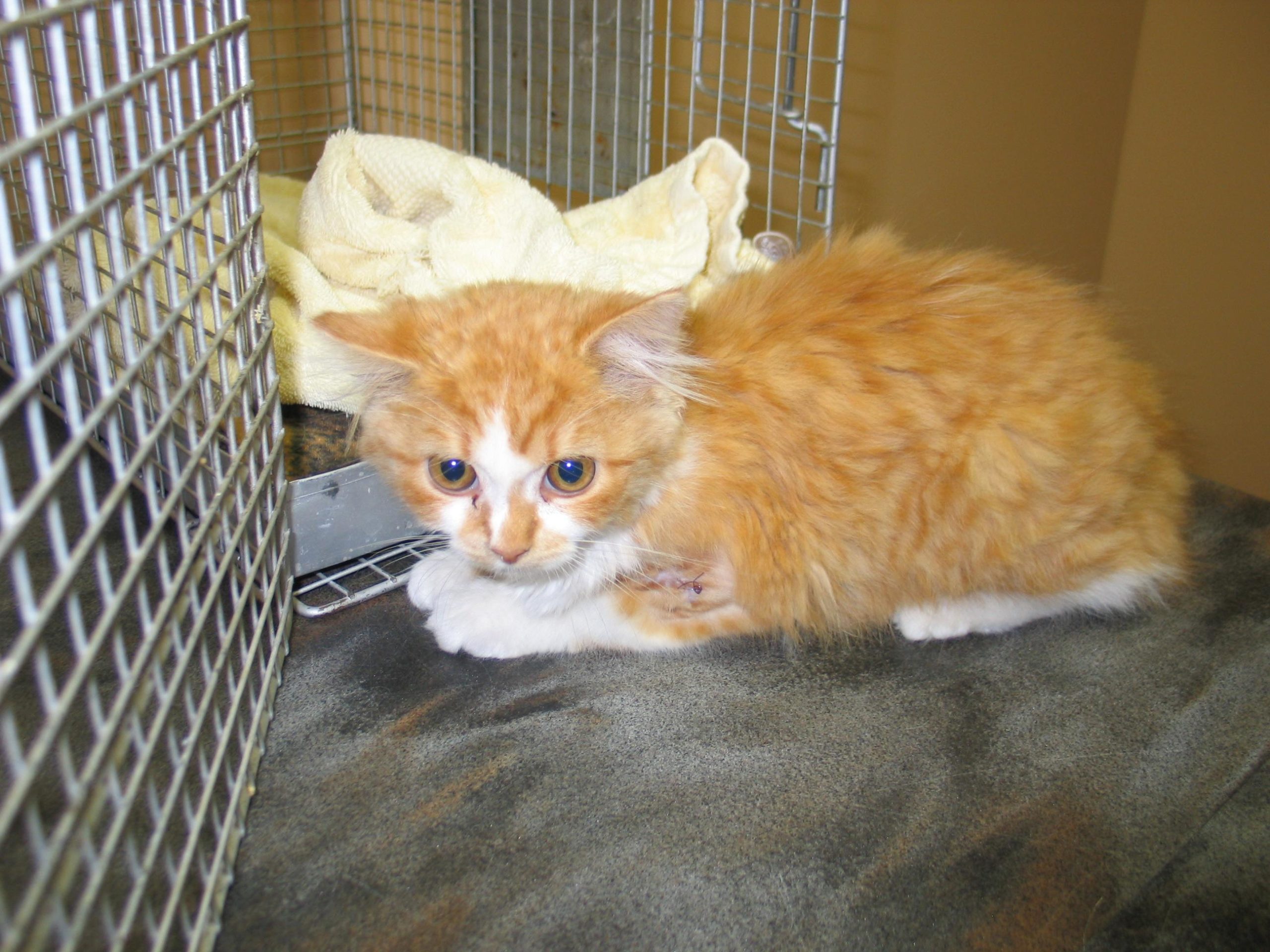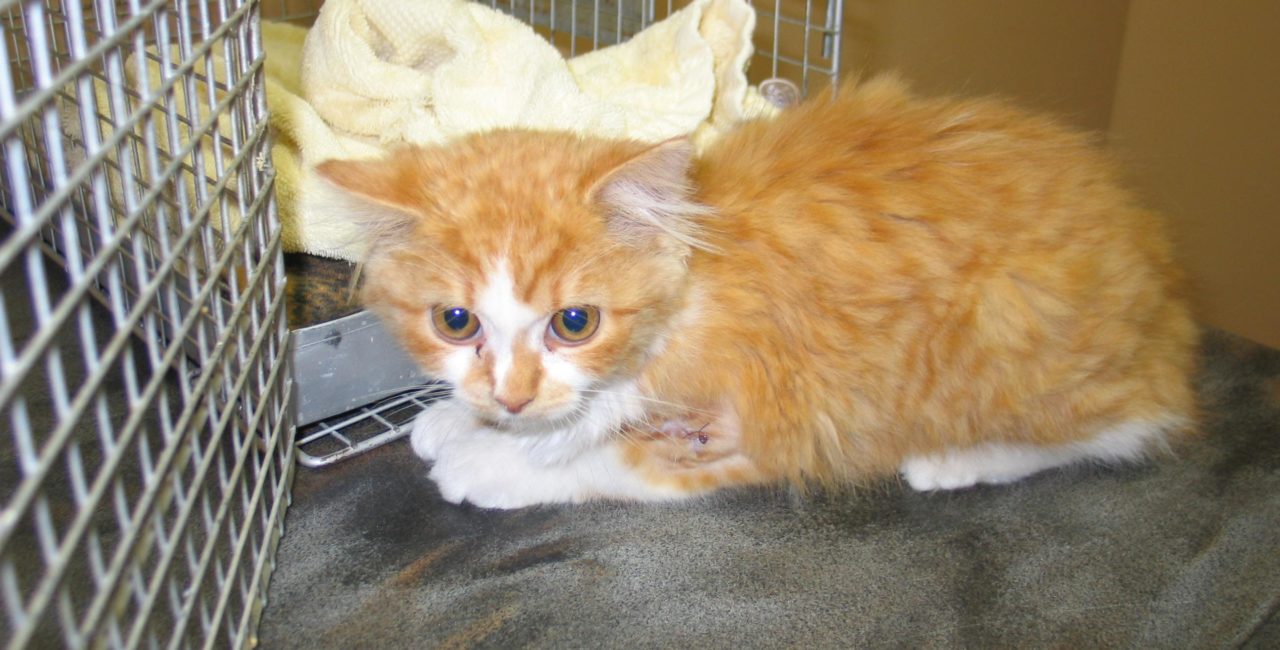Save a stray today,
but use care along the way
Rusty is one lucky baby kitten after being rescued from starvation and predators by a longtime client of Hillcrest Animal Hospital. About 12-weeks-old, the kitten is orange and white, cute as a bug and still a little prickly about being handled. Man can she purr, even seconds after she’s been puffed up all scary-like, trying to terrify us.
After seeing open wounds on the stray kitten last week, Rusty’s rescuer brought her in to be patched up and prepared for the transition from wild spitfire to housecat. She needed a few stitches, some medications and a schedule for integration into her new home.
There are a lot of things to consider when bringing a new kitten into the house, especially when there are already pets living there.
- No matter where the kitten is from – established breeder, humane society or inhumane dumpster – be sure she is kept away from your other pets. A three-week isolation period is usually sufficient to identify infectious diseases and parasites.
- Keep your own health in mind also. Strays and ferals could carry rabies. If the animal is aggressive or acting strangely, stay away and contact the public health department at 613-394-4831. More information regarding rabies is available at CFIA website .
- Ideally, your new addition should be seen early in the quarantine period to be checked for parasites such as fleas, lice, and intestinal worms. A thorough physical exam would normally be part of the visit and some vaccines may be given. Strays need to be checked for microchip identification.
- All kittens should be tested for feline leukemia (FeLV) and feline immunodeficiency virus (FIV). This is a blood test that ideally is performed three to four weeks after any possibility of exposure. If tested sooner, the diseases may not have had a chance to incubate long enough to show up and false negatives can occur. Both FeLV and FIV require direct, sometimes prolonged, contact between cats to be transmitted. You cannot carry the infection on your clothes and it is not transmitted from contaminated environments. Both of these viruses cause deadly disease and they can be carried for long periods before signs develop.
- Unlike FeLV and FIV, most causes of upper respiratory disease in cats are easily carried on hands and clothing. The most common condition, rhinotracheitis, is caused by a herpes virus like the one behind cold sores in people. It too lives indefinitely in the nervous system and can be reactivated by stress later in life. Affected cats often have goopy discharge from their eyes and noses. Usually they are sneezing a lot too. Although generally it causes mild signs much like a human headcold, in really young, old and weak animals, rhinotracheitis can be fatal.
If a new pet is sneezing or has runny eyes or nasal discharge, wash your hands and change your clothes before touching other pets. Containing the infection from feline upper respiratory disease is a real challenge. Get veterinary advice right away.
Although rescuing a kitty is a wonderful way to share your love and home, take the proper precautions to keep your existing pet and human family healthy. Contact your veterinary clinic for help moving your own Rusty into the household safely.
Dr. Fiona Gilchrist
Hillcrest Animal Hospital
August 2011




